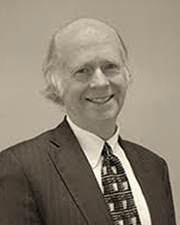An appraiser contemplates the life cycle of religious properties - by Arnold Grant

Arnold J Grant Associates, Inc.
As faith communities design and build religious facilities, the planning horizon may be measured in terms of decades or centuries. Churches, mosques, synagogues, and temples may offer the promise of permanence. Places of worship may anchor a city, a town or a neighborhood. They are expressions of faith, of optimism and aspiration, designed to honor and sometimes to impress.
Yet the utility of buildings designed for religious purposes is not unchanging. The design of a religious building or campus reflects community practices in effect at the time of its creation. Life is change and religious campuses evolve. They may grow larger and more complex as a faith community develops. They may be refined or made smaller over time. Religious buildings may be very simple, built of modest physical elements, for example a mission church established as an offshoot from a larger congregation. Cathedrals may be built with exquisite materials, as may smaller churches.
A religious campus often incorporates a place of worship and a place of study. The school may be larger than the church itself. Housing for teachers and students adds more complexity to a religious campus. While the elements of worship and study may be eternal, the populations served by religious properties are not static. Movements of people from town to city, to suburbs and back cause demand for space in religious buildings to ebb and flow; not overnight, but over the long term.
When members of a faith community move away from an existing religious property the number of active worshipers at a site will decline. If the decline is significant and if the worshipers have difficulty paying for the cost of maintenance, the property may be sold to a different faith community. There is a well-established tradition of buildings created to serve one faith changing hands to serve another faith.
If there is no longer sufficient demand for worship at a given location, or if the building no longer suits the needs of the original or a subsequent faith community, the building may be repurposed. Small churches are sometimes converted to single family residential use. They may be converted to offices or used as an artist’s studio by a muralist. Larger religious buildings may be converted to residential condominiums. Some have been purchased by municipalities for use as a senior center or day care center. At times a religious structure may be demolished and the land used for another purpose.
When valuing religious properties special attention must be paid to the age of the structure and to effective demand for continued religious use of the property. Proposed and relatively new religious properties are typically appraised using the Cost Approach. It may be very expensive to create a new religious building. Construction materials and design have significant impacts on the cost of construction. Utilizing a detailed cost estimate provided by a contractor may be very helpful. When a religious building or campus is older the Sales Comparison Approach is generally the most pertinent technique when estimating market value. Analysis of effective demand for the improved property, versus the market for the underlying land, is necessary to determine the most appropriate way to apply the Sales Comparison Approach.
Supply and demand factors associated with space to be used for worship or school purposes requires attention.
The coronavirus introduced uncertainty in the market. Connecticut state mandates limited the size of indoor religious gatherings. While most or all restrictions have been removed, some parishes and congregations have reported diminished attendance. Some worry that the level of in person church attendance will not rebound, and that the long term trend of diminished attendance will continue. Others hope that the decline in worshipers is temporary. At present the market is somewhat unsettled as demand is reduced and as the supply of religious properties offered for sale has increased. There were relatively few sales of religious properties in the Connecticut market during the past 18 months.
Sales by larger multi-church organizations may be having a downward impact on unit sale prices. The number of religious properties available for sale has increased over the past few years. That said, there is still limited availability of good quality, well located religious properties.
Arnold Grant, CRE, MAI, is the owner of Arnold J. Grant Associates, Inc., Hartford, CT.
Boyle of Chozick Realty negotiates $7.95m sale of 66-unit property







.png)